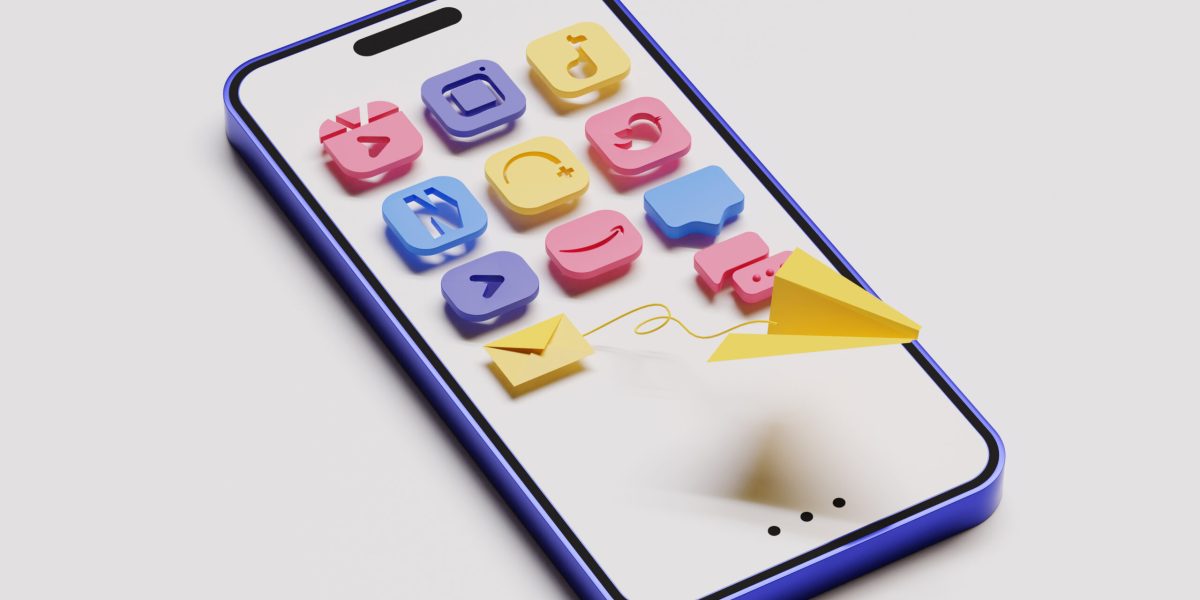By 2025, mobile apps will be integrated into daily routines such as shopping, banking, entertainment, and productivity. To meet user expectations, apps have to go far beyond being graphically appealing. They must provide easy to understand workflows, fast and reliable, multi layered experiences. Let’s explore what your target audience will expect from mobile applications in 2025 and how you can meet these expectations. Ready to bring your app idea to life? Get started with our expert app development service today!
Expected Features by Users in Mobile Apps
1. Effortless Personalization and AI Powered Interaction
User Expectations:
Personalized actions based on users behaviors, smart content and actions based on user preferences.
How to deliver it:
Integrate machine learning algorithms to automate adjustment of user activity (i.e. shopping, movement patterns over time, geo-location).
Balancing AI personalization and content adjustment enables dynamic change of content, from shopping guides to AI powered onboarding processes.
In-app journeys and customized notifications based on user profiling and data segmentation can increase engagement.
2. Second App Load Times & Un-interrupted Performance
User Expectations:
Older devices and slower networks do not cause apps to lag, systems load and respond fluidly and instantly.
How to deliver it:
Adaptive streaming and delay loading of images as well as prioritization of network calls will free up space for other actions.
Using native mobile or efficient frameworks for iOS and android app development like swift, kotlin or cross platform flutter increase speeds.
Dynamic and instant responsiveness as well as fluid interactions enable the use of monitoring tools for analytics like Firebase Performance Monitoring or New Relic.
3. Augmented Reality (AR) and Visual Search
User Expectations:
Contemporary applications allowing AR previews or visual recognition, like try before you buy furniture and scanning items using a mobile camera.
How to deliver it:
Implement ARKit (iOS) or ARCore (Android) for planes and visual overlays.
Implement image recognition using machine vision APIs (e.g. TensorFlow Lite, Vision API).
Perform real device testing for accuracy, usability, and other metrics before rollout.
4. Advanced Security and Privacy Controls
User Expectations:
Biometric authentication, control over data, encrypted communication, and policies that are easy to understand.
How to deliver it:
Secure app access using biometric login (FaceID, fingerprint) and personal data using app-specific encryption.
Use HTTPS/TLS to secure API traffic and encrypt on-device local data storage.
Allow users to control permissions, data deletion, and privacy parameters.
Comply with privacy regulations including but not limited to GDPR and CCPA.
5. Offline Functionality and Progressive Web App (PWA)
User Expectations:
Functionality like browsing, saving content, filling forms, and maps even when offline.
How to deliver it:
Local caching and databases such as SQLite or Realm as data storage.
Using PWA, facilitate seamless transitions between offline and online states.
Store essential data locally, make changes while offline, sync when online, and gracefully handle sync conflicts.
6. In App Messaging and Communications That Happen in Real Time
User Expectations:
Users expect to access chat options, notifications, offer real-time assistance, and push messages while staying in the app.
How to deliver it:
Use FCM or OneSignal to deliver push notifications.
Enable in-app chat tailored with Stream Chat, SendBird, or Twilio for chat functionalities.
Set up real time engagement and assistance alert tracking or real time event monitoring.
7. Digital Assistant and Voice Command Features Integration
User Expectations:
Voice guided app navigation, voice query submission, or task execution through voice command automation.
How to deliver it:
Use voice APIs on the respective platform, such as Siri Kits for iOS or Google Assistant SDK for Android.
Create hands-free guided interaction frameworks for voice-driven workflows.
Make sure that users who do not want to speak or cannot use voice features have alternative access pathways.
8. Assisting Users with Micro UX for a Smooth Onboarding Process
User Expectations:
Offering onboarding that is simple and stepwise with guides and suggestions to assist the user.
How to deliver it:
Implement progressive onboarding that reveals features step by step.
Add animation to buttons, add haptics, use motion for error cues, and other smooth transition to add micro-interaction.
Use social sign-in, device fingerprinting, or fill fields automatically to reduce input friction.
9. Integration with Cloud and Syncing
User Expectations:
Users expect all these functions to work across multiple devices and platforms.
How to deliver it:
Use Firebase, AWS Amplify, or Azure Mobile Apps for cloud backend data sync capabilities.
Allow accounts to log in and sync preferences on iOS, Android, and the web.
Utilize real-time data features or APIs with push updates on all cross-platforms.
10. In-App Analytics and Feedback Systems
User Expectations:
Submit feedback, report bugs, check usage data, or vote on proposed features.
How to deliver it:
Use analytics tools like Firebase Analytics, Mixpanel, or Amplitude.
Enable feedback, rating, and bug reporting directly in the app.
Use A/B testing for improving user experience.
Why A Strategic Partner Matters for Delivering These Features
These features need specific attention, and for those, along with reliable web development and cross-platform experience and mobile engineers, you need a strategic partner. Pro developers offer secure, high performance feature implementation on scalable architecture. It streamlines backend, analytics, and DevOps integrations. Transform your vision into a powerful mobile solution. Partner with our trusted app development service today
Final Thoughts: Anticipate Users Expectations and Build Them In
Users in 2025 expect more from apps as they want tasks to be performed easily, security enabled, done expeditiously and with an intelligent touch. Each function improves how users interact with the app and improves the companies market image and retention. Implementing next gen functions into your mobile product especially with a well organized MD (Mobile + Development) team gives a competitive advantage.
In case you are looking to create a mobile app in the market with features that users would revel in and seamlessly scale, there is a need to work with specialist web development companies and professional app developers. The right partnership can enable the much needed today’s mobile app innovation while solving the need for tomorrow’s mobile app requirements.












